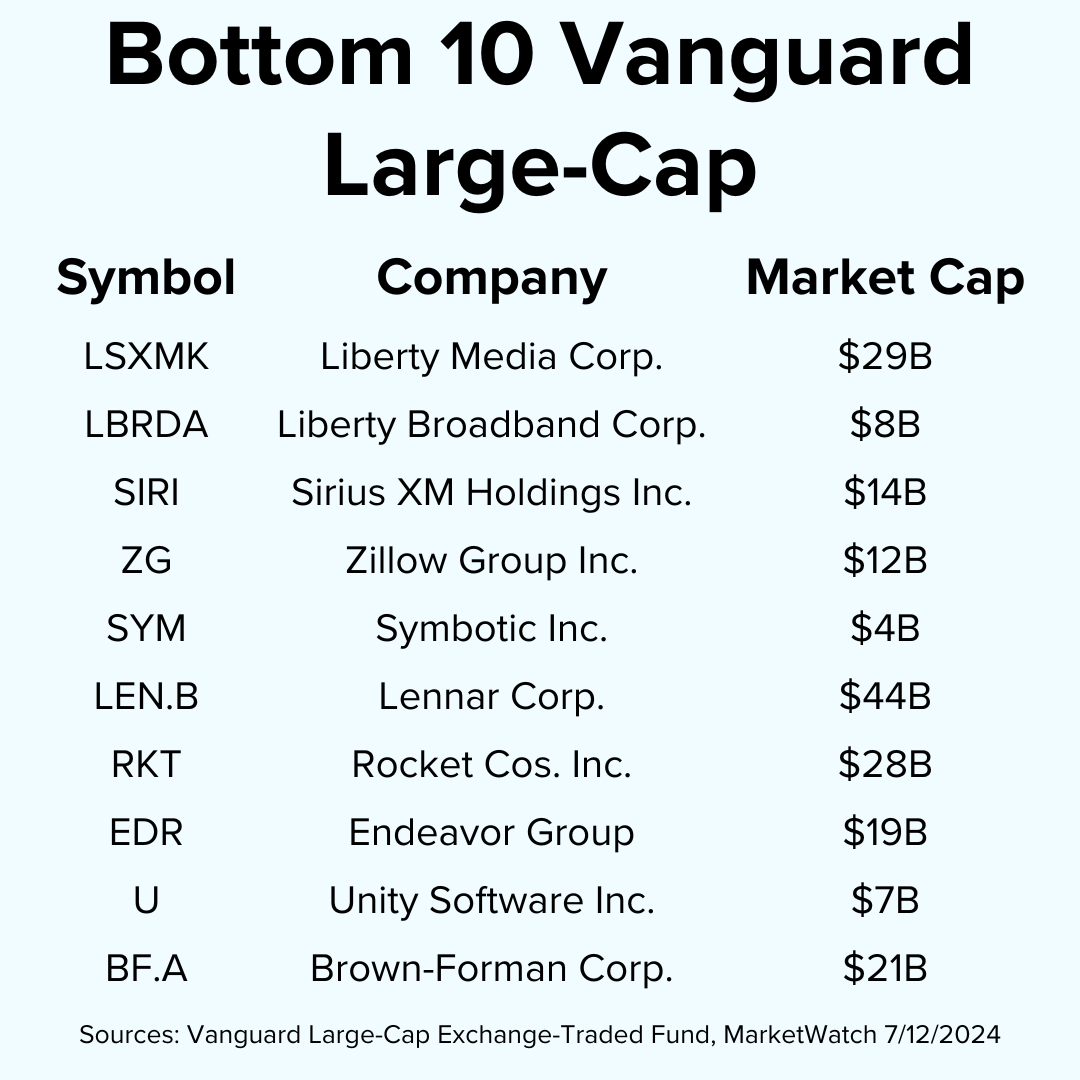What Are Large, Mid, and Small-Cap?
Hello, I’m Kevin - a financial planner who helps tech professionals and their families live great lives.
Make yourself at home - we'll get to large-cap, mid-cap, and small-cap stocks in a moment.
But first - here are some links you may want to save for later.
Your Last Career Will Be Investor
Are My Assets in the Right Location?
Now, let's get on to the blog! 😀
Capitalization
“Cap” is short for capitalization. Market capitalization is essentially what a publicly traded company is worth.
According to the Financial Industry Regulatory Authority (FINRA):
Market capitalization, or market cap, is one measurement of a company’s size. It’s the total value of a company’s outstanding shares of stock…
To calculate market cap, you take the total number of a company’s shares outstanding and multiply that figure by the company’s current share price.
For example, if a company has 5 million shares outstanding and its current stock price is $20, it has a market capitalization of $100 million.
Market capitalization = shares outstanding * stock price
$100 million = 5 million shares * $20 per share
Large, Mid, and Small-Cap in Theory vs. Practice
According to FINRA, the definitions of large, mid, and small-cap are
large-cap: market value of $10 billion or more
mid-cap: market value between $2 billion and $10 billion
small-cap: market value of less than $2 billion
However, what matters to investors is the size of companies in large-cap, mid-cap, and small-cap funds. Those categories aren’t as clear.
Large-Cap
A couple practical sources for the large-cap stocks are:
Largest Vanguard Large-Cap
The largest holdings for the Vanguard Large-Cap Exchange-Traded Fund (ETF) are:
Largest Fidelity Large Cap
The largest holdings of the Fidelity® Large Cap Stock Fund are similar but notably different:
Comparison of the Largest Vanguard and Fidelity Large-Cap
Half of the 10 largest holdings are the same for the two large-cap funds:
Microsoft Corp.
Apple Inc.
NVIDIA Corp.
Meta Platforms Inc.
Alphabet Inc.
The others are different.
Smaller Vanguard Large-Cap
The smallest Vanguard Large-Cap ETF companies are about 1/1,000th to 1/100th the size of the largest:
Mid-Cap
Two practical sources for mid-cap stocks are:
Although they’re huge, fewer mid-cap companies are household names.
Largest Vanguard Mid-Cap
The largest Vanguard Mid-Cap Index Fund holdings have market capitalizations several times the $10 billion upper FINRA limit:
Largest Fidelity Mid-Cap
The largest Fidelity® Mid Cap Index Fund holdings are closer in size to the largest Vanguard Mid-Cap holdings than the $10 billion upper FINRA limit:
Comparison of the Largest Vanguard and Fidelity Mid-Cap
Four of the top 10 holdings are the same for the two mid-cap funds:
Amphenol Corp.
TransDigm Group Inc.
Constellation Energy Corp.
Cintas Corp.
The rest are different.
Smallest Vanguard Mid-Cap
Many of the smallest Vanguard Mid-Cap Index holdings are much bigger than FINRA’s mid-cap range of $2 to $10 billion:
Small-Cap
The largest companies held in Vanguard and Fidelity small-cap funds are several times larger than FINRA's $10B upper limit for mid-cap stocks.
Largest Vanguard Small-Cap
The largest holdings in the Vanguard Small-Cap Index Fund are:
Largest Fidelity Small-Cap
The largest holdings in the Fidelity® Small Cap Index Fund are:
Comparison of the Largest Vanguard and Fidelity Small-Cap
Only one company is in the top 10 holdings for both small-cap funds:
MicroStrategy Inc.
The others are different.
Smaller Vanguard Small-Cap
Even some of the smallest holdings in the Vanguard Small-Cap Index Fund are larger than the $2 billion small-cap limit:
Broad Ranges
Neither Vanguard nor Fidelity follows the FINRA definitions of
large-cap: market value of $10 billion or more
mid-cap: market value between $2 billion and $10 billion
small-cap: market value of less than $2 billion
Unlike FINRA’s definition, the Vanguard:
upper limits for mid-cap and small-cap are several times larger and
its ranges overlap.
Household Names
It may be helpful to consider household names in each group. The following are examples from the Vanguard funds:
Sources
The list of companies held in Vanguard and Fidelity funds come from the following.
Large Cap
Mid-Cap:
Small-Cap:
The market capitalization information for this article come the MarketWatch Investing stock pages for each company such as: Microsoft Corp.
Hey, thanks for reading my post on what large, mid, and small-cap stocks are.
Just a reminder, I share a lot of resources that can help you.
Disclaimer
In addition to the usual disclaimers, neither this post nor these images include any financial, tax, or legal advice.
















